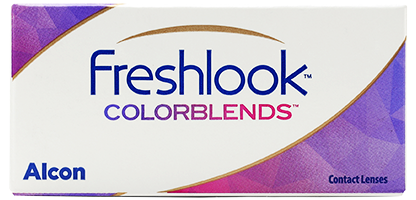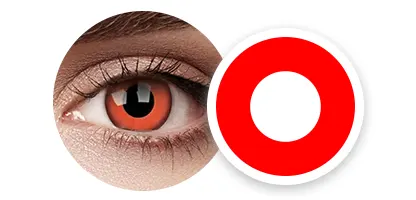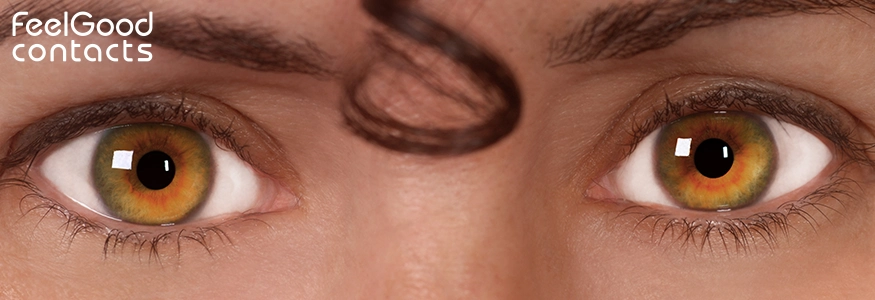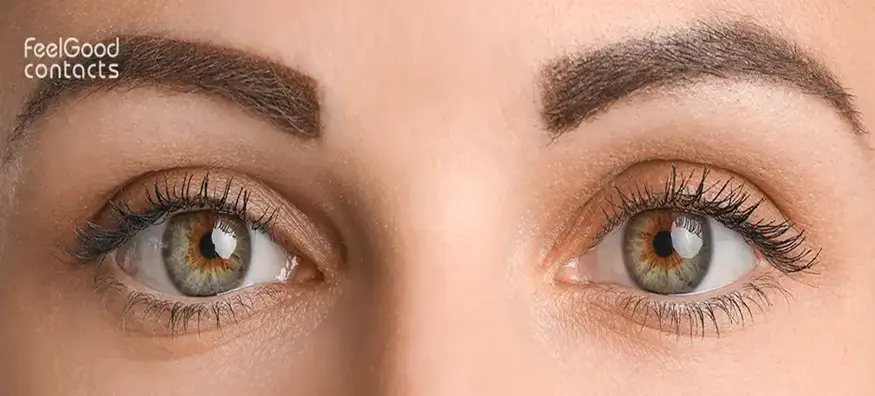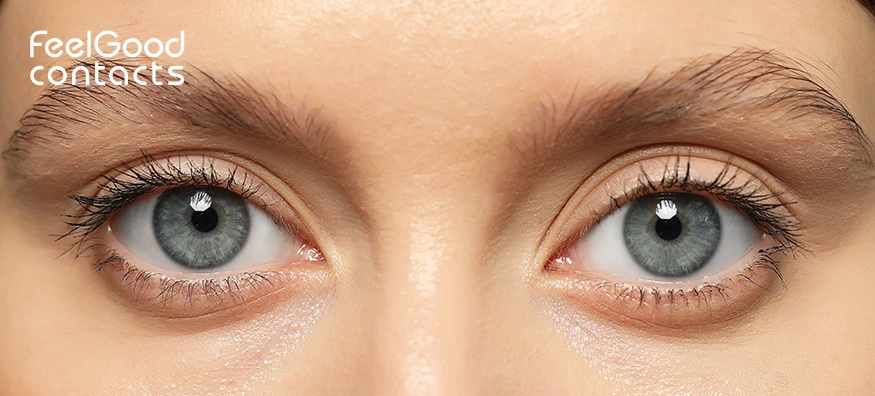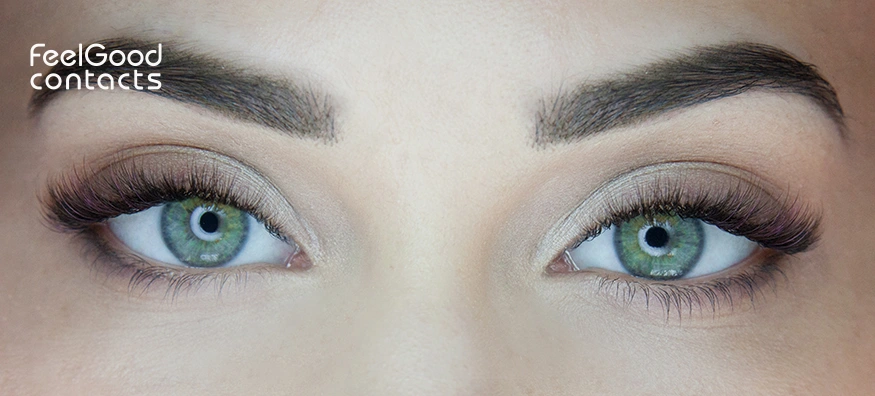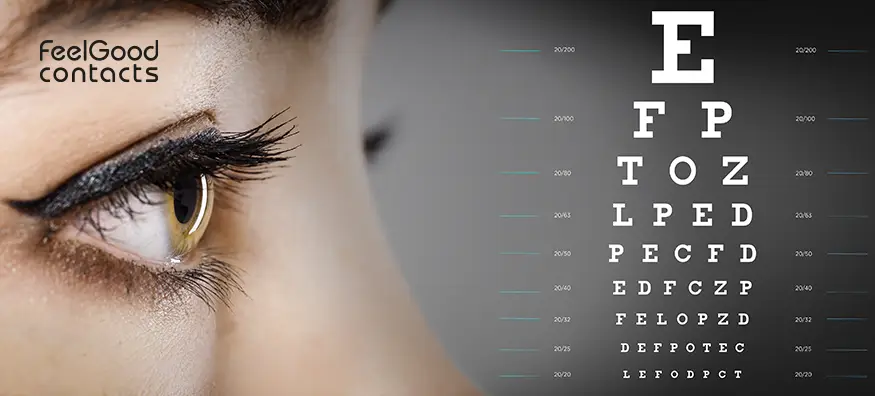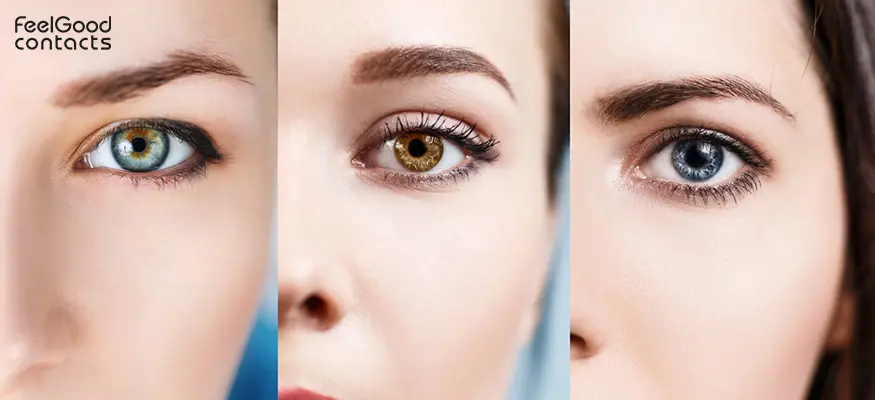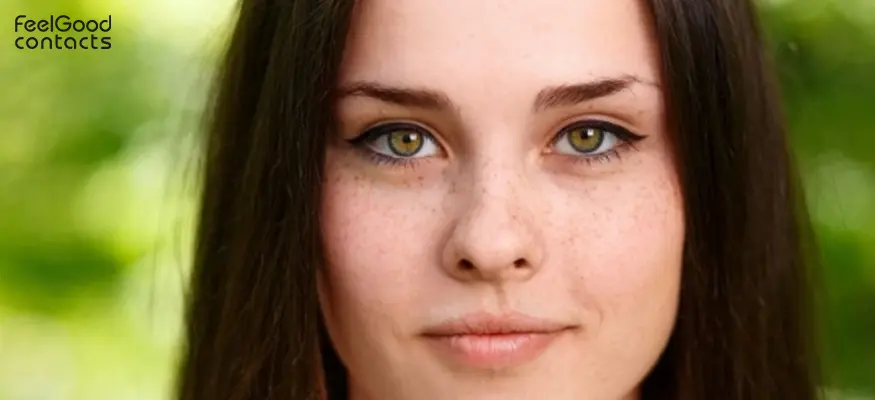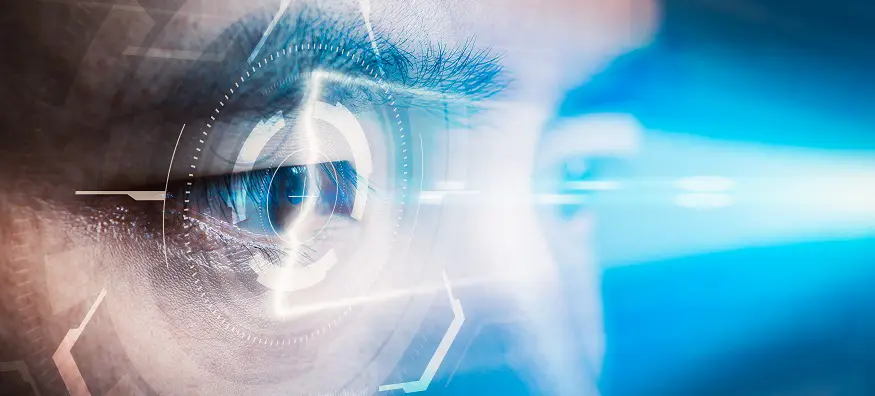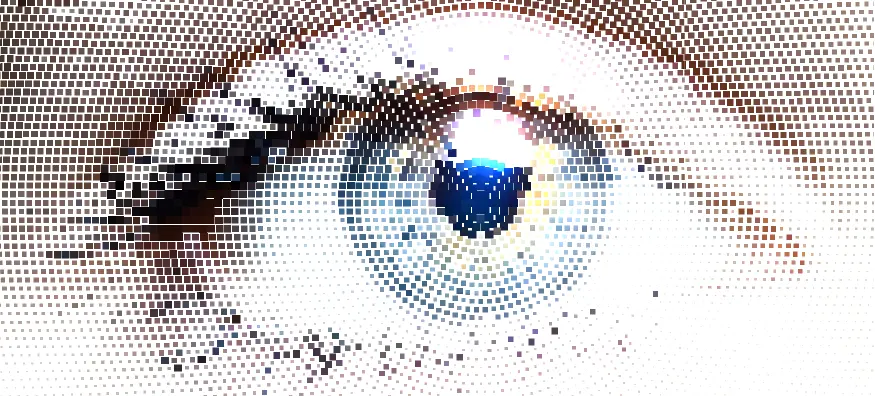How eye colour develops
Did you know that the eye colour develops during the first six months of a baby's life? Eye colour is usually fully developed by the time a baby is one year old.
Let’s start with the basics:
- A person’s eye colour is the result of pigmentation within the iris.
- The coloured part of the eye is known as the iris and contains a combination of pigments in the layer known as the stroma.
- The combination of pigments, the way in which they are dispersed and how the stroma absorbs them determines the colour of the eye.
There are three pigments in the stroma:
- Melanin is a yellow/brown pigment that also determines skin tone.
- Pheomelanin is a red/orange pigment and is responsible for red hair and is predominant in green and hazel eyes.
- Eumelanin is a black/brown pigment that exists in large quantities in dark eyes. This pigment determines hue saturation.
While children can be born with completely different eye colours to their parents, a child will likely have brown eyes if both parents have brown eyes as this is a dominant eye colour.
Did you know?
Some children are born with heterochromia, a condition where the irises differ in colour. This can be caused by a range of factors, including trauma in the womb or shortly after birth, inflammation and Horner’s syndrome.
Is eye colour determined by genetics?
Different variations of genes are responsible for determining eye colour. This includes production and distribution of melanin, pheomelanin and eumelanin. Two main genes involved in producing proteins and influencing eye colour are OCA2 and HERC2.
Light coloured eyes
OCA2 produces the protein responsible for more melanin production. However, the HERC2 gene can turn the protein production of the OCA2 gene on and off. If there is a genetic variation in the HERC2 gene, the amount of melanin produced can be reduced, which can lead to lighter eyes.
Did you know?
- Brown eyes have more melanin than green or hazel eyes.
- Blue eyes have very little pigment and no melanin, resulting in very pale blue eyes. When someone has no melanin, this is known as oculocutaneous albinism.
While eye colour is determined by genes and is passed down through generations, genetic variations can sometimes cause surprising eye colours.
Can a baby’s eye colour be predicted?
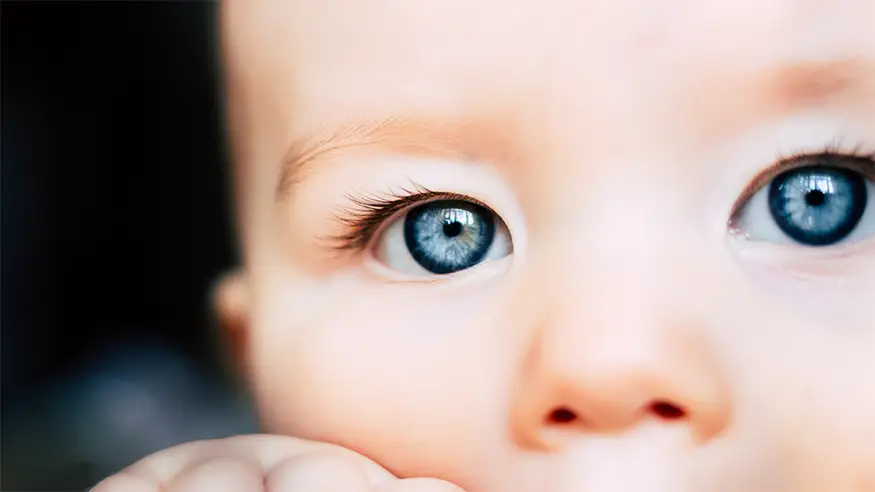
It is possible to make fairly accurate predictions about what colour a baby’s eyes will be. While the likelihood of certain eye colours increases based on your parent's eye colour, predictions are never entirely certain. For example, if a baby has blue-eyed parents, it's more than likely that they will have blue eyes.
The below table works as a baby eye colour calculator.
| Parent 1 | Parent 2 | Blue | Green | Brown |
|---|---|---|---|---|
| Blue | Blue | 99% | 1% | <1% |
| Green | 50% | 50% | <1% | |
| Brown | 50% | <1% | 50% | |
| Green | Green | 25% | 75% | <1% |
| Brown | 12% | 38% | 50% | |
| Brown | Brown | 19% | 7% | 75% |
Source: verywellhealth.com
Please note that, the above table is not accurate. The eye colour can vary depending on the genes passed.
Did you know?
Newborn babies' eyes usually correlate to their skin tone. Caucasian babies are often born with blue or green eyes, while black, Hispanic and Asian babies typically have brown or black eyes.
Can eye colour change?
Eye colour rarely changes after the first few years of life. Nevertheless, there are many factors that can influence eye colour and whether it changes due to a different pigment.
1. Increased sun exposure
Exposure to sunlight causes more melanin production in our bodies, and this can cause our eye colour to change slightly if our eyes are exposed to more sunlight. As a result, they may appear a shade darker than our current eye colour.
Natural sunlight can also reveal colours that already exist in your eyes as it is brighter than artificial light.
2. Changes in pupil size
- When pupils dilate, their size can also change eye colour. For example, when a pupil dilates, the iris is less exposed, causing it to look darker.
- When pupils constrict, the eye colour may appear lighter due to the contrast between the pupil's black and the iris surrounding it.
Did you know?
Many people believe David Bowie had two different coloured eyes due to heterochromia, but he actually has anisocoria, a condition which caused his left pupil to appear larger and therefore, darker than his right pupil.
3. Clothing and makeup choices
Certain colours of clothing and makeup can enhance our eye colour. Your eyes can appear lighter or darker depending on the colour you wear.
You can also change your eye colour by wearing coloured contact lenses, whether they’re prescription or plano/cosmetic use.
4. Age
Eye colour can change with age, especially in those with lighter eye colours. For example, it’s common for brown eyes to become hazel or for some hazel eyes to even darken with age.
Tina Patel, Contact Lens Optician at Feel Good Contacts suggests, “If you experience dramatic changes in eye colour, you should see your doctor immediately as this could be a sign of certain diseases such as Horner's syndrome or glaucoma”.
5. Emotions
Certain emotions can make your pupils change size and your iris’ change colour.
- When you’re angry, sad, or happy, your body releases a hormone that can change your pupils' size.
- When we cry, our eyes become a reddish colour making them appear brighter in colour.
- When we are happy or angry, our eyes usually appear more vibrant.
Can you have two different coloured eyes?
Yes, it is possible to have two different coloured eyes. There are many celebrities with different coloured eyes, including Alice Eve. This condition is known as heterochromia and is caused by variations in the concentration and distribution of melanin.
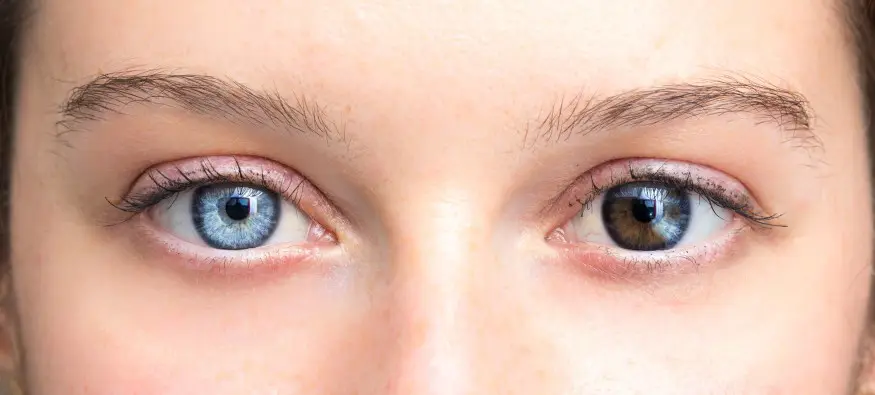
There are different types of heterochromia.
Central heterochromia can cause different colours within the same eye.
Complete heterochromia causes two completely different coloured eyes.
Please note that heterochromia can also be a result of an injury, illness or medication and develop later in life. This is known as acquired heterochromia.
Top tip: If you want to get the heterochromia celebrity look for less, we have got the right lens pack for you. Try comfi Colors 1 Day Rainbow Pack. Enjoy five colours in one pack, including Blue, Grey, Green, Hazel and Brown.
What does your eye colour mean?
There is meaning behind the colour of human eyes, and the below explains why there are brown, blue, green and hazel eyes.
1. Brown eyes
Brown eyes are the most common eye colour in the world Brown eyes have more protection from the sun, which more than likely had evolutionary benefits. There is more genetic variation amongst those with brown eyes than those with blue eyes.
2. Blue eyes
Blue eyes are the result of low concentrations of melanin. This allows more light to reflect back to wavelengths on the blue colour spectrum, making them appear blue.
3. Green eyes
Green eyes are very rare and are also a result of genetic mutation. The level of melanin is lower than brown eyes, but higher than blue eyes. The lack of melanin in the iris causes light to scatter out and make eyes appear green.
4. Hazel eyes
Hazel eyes are incredibly unique and are often mistaken for green or brown eyes. Hazel eyes have the most melanin after brown eyes and usually feature a combination of colours in shades of green, brown and gold.
Most loved coloured contact lenses
At Feel Good Contacts, you can browse from a wide range of coloured contact lenses. From blue to Red Devil, you can find the colour and pattern of your choice at affordable prices.
Sources:
https://www.verywellhealth.com/genetics-of-eye-color-3421603
https://www.healthline.com/health/eye-health/eye-color-percentages#takeaway
https://medlineplus.gov/genetics/understanding/traits/eyecolor/
Disclaimer: The advice and suggestions in this blog are for informational purposes only and are not a substitute for medical care. Before trying any products or remedies, consult with an eye care professional. See our Editorial Policy for details on how we review our blog.

















